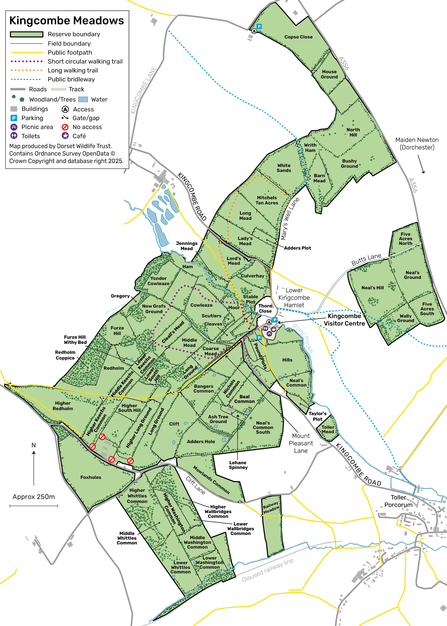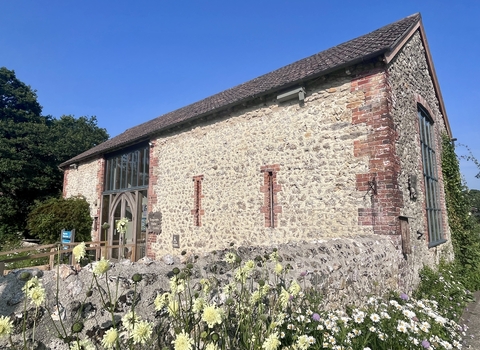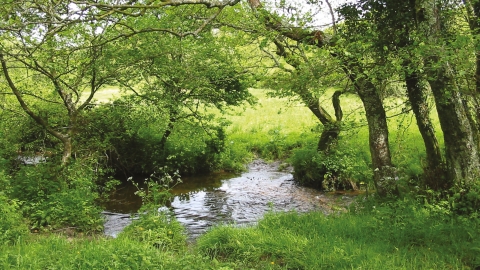

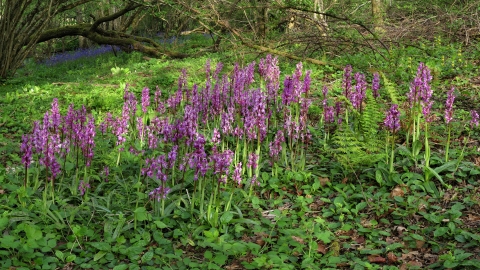

Hazel Ormrod

Hazel Ormrod
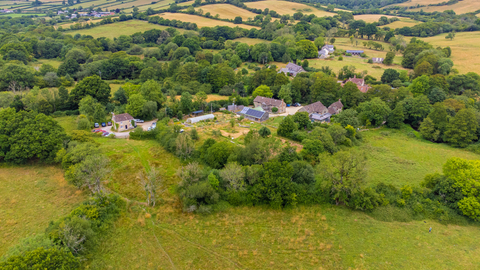
James Burland / Kingcombe Visitor Centre
Kingcombe Meadows
Location
Know before you go
Dogs
Please remove any dog mess or litter from site and keep dogs on a short lead. See above for more information about dogs on nature reserves.
When to visit
Opening times
Kingcombe Visitor Centre is open daily 10-4pm.The Kitchen at Kingcombe café is closed Monday-Tuesday, and open Wednesday - Friday from 10.30am - 3pm, and Saturday - Sunday from 10am - 3:30pm.
Kingcombe Meadows Nature Reserve, car parks and outdoor facilities will remain open for visitors to enjoy.
Best time to visit
Anytime. Spring/summer for wildflowers & butterflies. Autumn for fungi and moths.About the reserve
Escape to the peace and tranquillity of Kingcombe Meadows and step back to a time when the countryside teemed with wildlife. The nature reserve is managed as a working farm, grazed by cows, sheep and Exmoor ponies, without the use of pesticides, artificial fertilisers and other modern agricultural practices. The result is a patchwork of fields of unimproved flower-rich grassland, broken up by thick hedges, streams, ponds, ancient green lanes and wooded areas spreading up the valley either side of the River Hooke. This mosaic of habitats supports a wide range of wildlife.
The thick, traditionally managed hedgerows are home to dormice, as well as providing highways for other mammals and invertebrates. Farmland birds, like yellowhammer and linnet, make their homes amongst these hedges and scrub patches. Their calls are now a rarer sound in the intensively managed land beyond. The ancient trees drip with epiphytic lichens, mosses and ferns.
The River Hooke teems with invertebrates, like beautiful demoiselle, and brown trout weaves it way through the centre of the reserve. The rare great-crested newt inhabits the network of ponds.
The lowland grassland habitats across the reserve are incredibly diverse and nationally important. Chalk slopes bursting with spring cowslips, harebell and bee orchid. The valley bottom brings neutral meadows and rush pasture with southern marsh orchid, sneezewort and devil's bit scabious. As the land rises to the south the short turf of acid grassland with tormentil, lousewort and heath spotted orchid.The reserve is nationally important for the wax cap fungi with 27 species present!
The impressive summer wildflowers in the haymeadows bring with them clouds of marbled whites, meadow browns and ringlets butterflies that dance amongst them. One of the wildflower meadows at Kingcombe called Lady's Mead is a Coronation Meadow, part of the initiative launched by King Charles III in 2013 to restore wildflower meadows in honour of the 60th Anniversary of the Queen's Coronation. Find out more about the Coronation Meadows project here.
The Kingcombe Visitor Centre is at the heart of the nature reserve and is an ideal place to start exploring the surrounding nature reserve.
Find out more information about visiting Kingcombe Visitor Centre and the current opening times.
Useful Information
From Dorchester take the A37 to Yeovil. Just after the village of Grimstone turn left onto A356. Continue through Maiden Newton and turn left at the top of the hill signosted to Toller Porcorum. Turn right in the village signposted to Lower Kingcombe. Travel 1 mile and then look for the Kingcombe Visitors Centre sign on right. Map reference for main carpark is SY554990.
Species
Habitat
Contact us
Environmental designation
